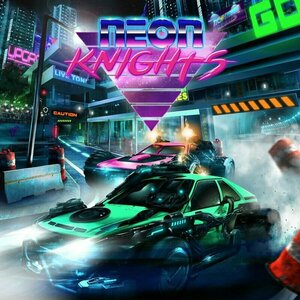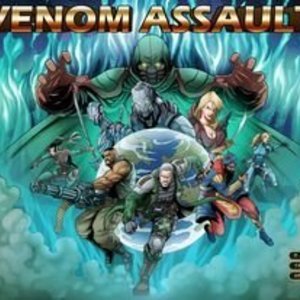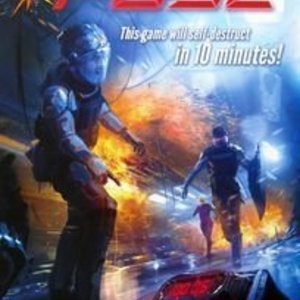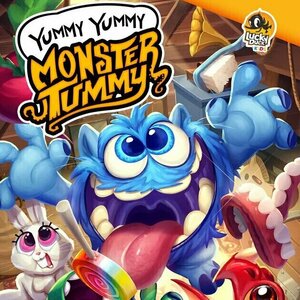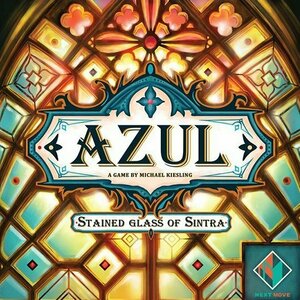
Wendake
Tabletop Game
"Wendake" is the name that the Wyandot People use for their traditional territory. This population,...
BoardGames 2017Games Nativegames
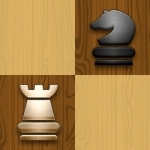
Chess HD ∙
Games and Entertainment
App
Are you tired of playing chess games that look like they were designed for a Commodore 64 instead of...
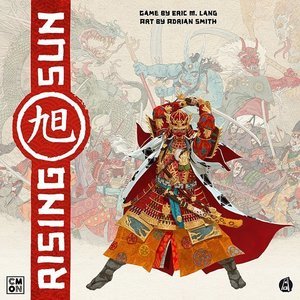
Rising Sun
Tabletop Game
Rising Sun is a board game for 3 to 6 players set in legendary feudal Japan. As the Kami descend...
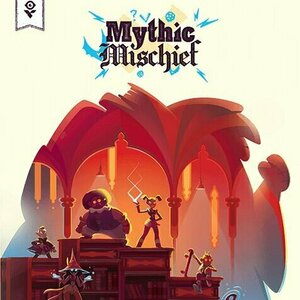
Mythic Mischief
Tabletop Game
In Mythic Mischief, you play as a faction of Mythic Manor students competing to get as many of the...
Purple Phoenix Games (2266 KP) rated Neon Knights: 2086 in Tabletop Games
Sep 10, 2020
Neon Knights 2086 (here forth known as NK) is a car racing game of customization and street battle. The game essentially takes place over three race weeks (rounds) with each week being divided into a preparation period and then the race day itself. The winner of NK is not necessarily the driver who crosses the finish line more often, but rather the driver who wisely invests in upgrades and tempts Lady Luck to be on their side during crucial dice rolls.
DISCLAIMER: We were provided a copy of this game for the purposes of this review. This is a retail copy of the game, so what you see in these photos is exactly what would be received in your box. I do not intend to cover every single rule included in the rulebook, but will describe the overall game flow and major rule set so that our readers may get a sense of how the game plays. For more in depth rules, you may purchase a copy online or from your FLGS. -T
To setup, separate and shuffle each different-backed deck of cards, set them on the board in their places, and display the number of cards equal to the card spaces on the board. Give each player components in their character color, the matching play mat, and starting car parts to be tucked under their mat. Determine the starting player who will construct the first race course out of the provided map chunks and the game may begin!
Again, I will not be explaining every rule in the game as there are just too many to cover, but the game is played over three weeks. During the preparation days leading up to the race on day 7 (Sunday I guess), players will be taking actions to draft upgrades to their cars, or implants into their driver’s BRAIN, getting themselves sponsored so they can make bank come pay day, and also accepting bets on how each driver can earn a little extra on the side come race day.
Each day leading up to the race will allow players to complete one action, and pay day is on Day 5. This is when players will be paid out by their sponsors thus allowing players more spending power at the various upgrade shops. However, Race Day looms ahead and drivers will be making sure they have the best car they can afford because racing is a matter of life or death.
During a race, players will be choosing their initial speed and traveling the course attempting to finish first to gain points, but also to inflict damage on opposing cars and trying to complete their bets they’ve made. Cars will typically travel the number of spaces that the driver has chosen as the speed for the turn, but along the way the cars will be passing over neon lights in the street that are colored according to the suggested speed to overcome them. Go too fast and players will need to roll damage dice to simulate clipping a curb or smashing into a building corner. Go the correct suggested speed or less and pass over the lights no problem and with no damage dice to roll. Of course, car upgrades can assist with this.
When cars end their turn on a space with another car, a battle ensues and damage is calculated. Also, either before or after movement a car can decide to use a weapon on a rival car in range of their weapon to inflict extra damage. After all, a well-damaged car must screech to a halt and possibly use precious resources to repair the damage. Races are flat out bonkers but are the crux of NK. The winner of NK is the player who can amass the most VP at the end of the game and will be able to run a victory lap in the streets.
Components. This game is one of those hefty 12×12 boxes that is packed with goodies. The board is huge. The player components are beautiful and amazing. The player mats are great and laid out really well. The big chunky street map tiles are big and chunky. The colors are perfectly ’80s and perfect for a board game. I have no issues at all with the components. Oh wait, just one little eensy weensy complaint. I wish the font in the rule book was something of the serif variety instead of block all-caps. I felt as if I were being scolded for reading the rules.
All that said, I find Neon Knights 2086 to be a beautiful and relatively quick-playing racing game with the added bonus of car customization akin to that of creating an RPG character (and everyone knows that’s the best part of RPGs). The prep days are super fast to play through because you are basically just taking cards from the offers or drawing cards from the face-down decks to improve your ride, or repairing your car from previous races, and negotiating with sponsors to get those sweet gigs.
The racing, however, is where the game play takes off. It’s here that all the planning and optimizing is put to the test. It’s here where you discover that some of your “upgrades” just ain’t cuttin’ it, and need to be upgraded further. Hopefully a new sweet (and affordable) weapon will come out during the week. Maybe a new sponsor will enter and entice you with tons of money. And then it’s Race Day and you can take your rig out to demolish the competition. Ahh sweet demolition.
This game was a big surprise for me for several reasons. First, I didn’t realize how much I actually enjoyed some of the things from the ’80s. Those colors are just so dang beautiful. That design. So good. But also I just don’t play a lot of car racing games so I was skeptical at first. I’m not a fan of NASCAR so obviously I won’t like any car racing game, right? At least that was my initial thought. Neon Knights 2086 may just have piqued my interest in trying out some other racing titles in the future. For these reasons, Purple Phoenix Games gives this one a bruised 8 / 12. If you are aching for a racing game with battles in the streets and customization in the sheets, check out Neon Knights 2086. I am now a believer, and can’t wait to play this one many more times.

Skater - Skate Legendary Spots, Perfect Board Feel
Games and Entertainment
App
IMPORTANT - Only For iPhone 4S and newer, iPod Touch 5th Gen, iPad 4 and up and iPad Mini and up. ...
Purple Phoenix Games (2266 KP) rated VENOM Assault in Tabletop Games
Jan 25, 2021
VENOM Assault is a deck-building game very similar in style to Legendary: A Marvel Deck-Building Game (which, if I have to reference again will just call Legendary). Players take control of a team of (relative) wimps in order to help recruit the real elites and battle the evildoers plus their henchmen. Sound familiar? For this review I will be playing the Solo rules, which are the same as the multiplayer rules, but for one player. Novel, eh?
DISCLAIMER: We were provided a copy of this game for the purposes of this review. This is a retail copy of the game, so what you see in these photos is exactly what would be received in your box. I do not intend to cover every single rule included in the rulebook, but will describe the overall game flow and major rule set so that our readers may get a sense of how the game plays. For more in depth rules, you may purchase a copy online or from your FLGS. -T
To setup a game, please follow the rulebook as there is way too much to cover here in complete detail. The setup should look similar to the following photo. Here is what you will see: a space for the Mission scenario in the upper left corner. To its right a space for the active Event card. Next to that is the area for the VENOM Support cards to be displayed. Then the VENOM Support deck and discard areas. Below the Mission area is the space to track threat level and the current VENOM Leader’s Health and Defense values. Beneath those trackers is an area for four decks: the VENOM Leader deck, Reward deck, Event deck, and Event discard. To the right of this area is the Training Ground (recruitment zone), the Recruitment deck, and the Retirement pile. In the middle of the board are seven spaces to be populated with Reward cards and VENOM Leaders on top of the Rewards. Each player is dealt six Recruits and four Commandos and will shuffle these to create their draw deck. The players then draw five cards to create their hand and the game may now begin! Go save the world!
I will not be covering every aspect of a turn but will highlight the goings on. The Commander (first player) will draw and read the Event for the round. Events can be helpful for the players, extremely hurtful by advancing the VENOM plot, or even uneventful altogether. Next, player(s) will enter the Recruitment Phase. During this phase players will be using their entire hand to total the recruitment points that can be spent on recruiting those elite soldier, vehicle, and location cards from the Training Ground right into their discard piles.
Once the Recruitment Phase is complete, the Tactical Phase begins, and this is a large part of the game that helps differentiate it from others of its like. The players will choose one of the seven revealed VENOM Leaders on the map to attack in combat (if they choose – this is optional). Using the stats on the VENOM Leader card the players will adjust the Health and Defense values on the trackers on the board. If the VENOM Leader has any abilities that would trigger during this phase, then they trigger now. These could include Global Abilities as well. Once the Leader is done with their abilities, the players will choose one of their cards played to become the Combat Leader. This character now may not use their printed ability but will use their Combat Value (crossed pistols) to place combat dice on their card. The other team members in the combat will add dice to the pool as well if their abilities direct them. Next, the VENOM Leader will call forth their VENOM Support armies to aid them in the combat round. Once displayed, any hero Tactical Phase abilities can be resolved. If VENOM Support armies still are active, their abilities may be resolved at this point.
As the Tactical Phase ends, the Combat Phase begins. The Combat Phase is where the players are able to roll their combat dice in the hopes of besting the VENOM Leader’s Health and Defense values. Defense values dictate the dice values that need to be hit or exceeded to equal a successful attack. The Health value is how many successes are needed to defeat the Leader. However, once rolled the VENOM Leader will trigger any Combat Phase abilities at this time. Once complete the hero team will be able to resolve their own Combat Phase abilities, if any. Finally, the VENOM Support will resolve their Combat Phase abilities. Now the dice may be completely resolved against the Leader, after all abilities have been resolved. If the Freedom Squadron (heroes) defeated the Leader, they take the Leader and Reward cards into their VP pile. Depending on the Mission, these Rewards may be necessary to win the game, and all will have VP values.
After a lengthy Tactical and Combat Phase, the players then enter the Retirement Phase. The players may retire a card from their hand, thus removing the card from the game entirely.
Once a card has been retired (or not), the End of Turn Phase will help clean up the mess of the current round. Any other End of Turn Phase abilities will trigger, and used cards will be discarded to the appropriate areas and refills of key points on the board and players’ hands will setup the next round of play.
Once the Mission card’s success or failure stipulations have been met the game is over and, with any luck, the Freedom Squadron has defeated VENOM once and for all!
Components. This game boasts a large game board, a metric ton of cards, some dice, and some cardboard tokens. All the components are of fine quality and I have no issues with them. The art style used in the game is pleasing and, thankfully, not over-the-top gory or bloody or anything.
You may have noticed or thought that perhaps this game is taking inspiration from a cartoon/toy line from the ’80s, and I would very much agree with you. Could it be called Legendary: G.I. Joe? Maybe, but this one stands on its own, though very similar to the Legendary system. What I do like about VENOM Assault is the fact that it already comes with a large amount of incredible cards to be recruited. I do not know if I will ever feel the need for extra heroes in this game, whereas with the Marvel Legendary one can really go overboard trying to collect all the mini expansions and big box expansions just to find their favorite Marvel entities. Since VENOM Assault isn’t tied to any specific IP and is more generic overall, each character provided is its own thing, not a specific hero that one has grown up loving their entire life.
You see, the problem with those mini expansions in Legendary, at least for me, is that each one brings with it a host of heroes AND a host of new keywords and rules that must be remembered or referenced until it becomes second nature. In VENOM Assault, the rules stay the same and play is altered by the Missions and which characters can be recruited. I like a more reliable and static ruleset when I’m playing an intense game. So point goes to VENOM Assault here too.
Now, I was never into G.I. Joe and I am not at all a war or guns kinda guy, but I am really attracted to this game. I don’t necessarily think of my heroes as going in and shooting the place up, but rather taking Navy Seals-style tactical maneuvers to eliminate the target. So the point is that if you were never into that IP before, you should not feel alienated by this one. It appeals to all, in my opinion.
I said previously in this review that VENOM Assault is knocking on the door of bumping Legendary from my Top 10 games. I continue thinking about it even when I am not playing, and that is a mark of an excellent game for me. If I never think of a game again after playing, there is no way it remains in my collection. This one, however, has me considering different strategies in my head even now as I’m typing.
If you are in the market for a great deck-builder with worldwide espionage at its heart, I urge you to grab a copy of VENOM Assault. If you like the Legendary system but are looking for something just a little different, check this one out. If you just enjoy owning games that are fun and make you think, but also include a bit of luck in the dice rolls, then you owe it to yourself to play this. I really think you’ll enjoy it, as I have. Okay, time to setup another game.
Purple Phoenix Games (2266 KP) rated FUSE in Tabletop Games
Jun 12, 2019
FUSE is a fast-paced game where a bomb squad is working against the clock to diffuse a number of bombs discovered on their ship! The goal is simple: diffuse all of the bombs before they explode. The gameplay, however, is a little bit more complicated. While there are a few minor differences between group- and solo-play, the basics of the game are unchanged – players roll and place dice in unique combinations to ‘diffuse’ each card. If all cards are diffused in the 10-minute time limit, then the game is won! And if not…then I think you know what that means. BOOOOOOOOOM!
Having played and enjoyed FUSE in both a group and solo setting, I think I can honestly say that I miiiight like it a little more as a solo game. My main reason is purely selfish – playing alone means that I don’t have to share dice. In a group game, the dice are rolled and divvied up between all of the players. Playing solo means that I can keep all of the dice for myself! And, theoretically, that means that I should be able to diffuse my bomb cards more quickly since I have more dice with which to work! Gone is the agony associated with sacrificing dice to other players – they’re all mine! Yeah, I have to deal with all of the bombs by myself too, but not having to share my materials makes the job seem easier even though it might not necessarily be any easier.
For me, one of the most challenging parts of playing FUSE solo is the real-time countdown. I know, I know, the timer is one of the most integral parts of this entire game. However, the pressure of a time limit is stressful and it makes me a sloppy player – dropping dice, knocking over towers, etc. Some lucky people have been blessed with the ability to remain calm under pressure, but unfortunately I am not one of them. I hope you don’t misunderstand my grievance with the timer for disliking the overall game, though. Having a timer adds an element of excitement that creates such a high-energy atmosphere, even when playing solo. I’m literally just rolling and placing dice, but with a ticking clock, I’m on the edge of my seat with adrenaline pumping as I try to complete my cards as quickly as possible! With every play, I’d like to think that I have gotten better at managing the pressure of the timer, even though that may not necessarily be true…
I do thoroughly enjoy playing FUSE as a solo game. Since time is of the essence, the game forces me to be creative with my dice placement and I must constantly be changing my strategy based on which dice I draw and what cards I have before me at any given time. If you are looking for a high-energy game, even when playing solo, look no further than FUSE. It will certainly keep you on the edge of your seat and will keep you engaged in the action until the game ends – either in celebration of success or a fiery explosion!
https://purplephoenixgames.wordpress.com/2019/02/18/solo-chronicles-fuse/
Purple Phoenix Games (2266 KP) rated Yummy Yummy Monster Tummy in Tabletop Games
Jan 14, 2022
In Yummy Yummy Monster Tummy (which, again, I think I will just call “this game” from here on out), players are kids who are visiting their grandfather and hear noises in the attic. When the kids check out the noises, they find colorful little friendly monsters roaming about! These monsters are all super hungry, and you have found that they love eating items that are the same color as their fur. Oh, but they hate anything considered to be a “vitamin.” Sound familiar, parents?
DISCLAIMER: We were provided a copy of this game for the purposes of this review. This is a retail copy of the game, so what you see in these photos is exactly what would be received in your box. I do not intend to cover every single rule included in the rulebook, but will describe the overall game flow and major rule set so that our readers may get a sense of how the game plays. For more in depth rules, you may purchase a copy online or from your FLGS. -T
To setup this game, first download the official app to your phone or tablet. Yes, an app. Start the app and choose your skill level. Grab all the cards belonging to the Attic set, shuffle them, deal each player the appropriate amount of cards, and place the rest of the deck face-down to form a draw pile. You are now ready to play!
This game is a cooperative game, so players are all trying to win as a team. The whole object of the game is to play cards that will match the monster’s fur that shows up on the app. The color of the cards are very important, as the cards that are played (scanned by the app) will be mixed together to form the new color. So if the monster on screen is red, adding a blue and brown card just won’t do. This not only helps teach colors and mixing, but also encourages cooperation and concentration – something my kids definitely benefit from having in a game.
As the game progresses, other creatures are added that require players to scan other cards, or that give special abilities. I will leave those to you to discover through your plays; I do not wish to spoil much of anything.
Shown below is a screenshot from one of our games, so that you can see what most of the game looks like and how cute the little monsters are.
Players will continue to play cards, draw new cards, and try their hands at mixing the correct colors to match the monster as closely as they can until the app is finished throwing monsters at you. At that time, your success is evaluated and you may even progress to the next mission, or to a new area altogether, adding a new set of cards to the existing deck. This increases possibilities for new color combinations, but also slowly adds in new rules to keep the game interesting and fresh.
My little boy and I have played this game about three million times since we received it from Lucky Duck Games. We cannot get enough of it, and have tried to introduce other players to it with tons of success. The overall premise is very cute and easy to grasp. Even when adding in new creatures and their special rules, he has been handling it remarkably.
I really appreciate the effort that has gone into developing a hybrid app/board game for kids that is just really fun for all who play it. I have seen where this has been redeveloped and rethemed from a different game with more sensitive subject matter. So that’s a boon.
I think the hardest part about playing this game is finding the sweet spot of where to hold the card so that the front-facing camera on the device is able to scan the QR code on the card backs. I know my kid had a difficult time figuring out what “5-10 inches away from the camera” actually meant. An easy fix, and we were on our way to our hundredth play.
If you haven’t had the opportunity to play one of these app-drive hybrid games, I definitely recommend picking up a copy of Yummy Yummy Monster Tummy right away. It is very light, designed for children AND adults, and will provide innumerable hours of quality time with family.
Oh, and don’t worry about reading the rulebook. Just download the app, shuffle the cards, and let the app whisk you away… to your grampa’s attic. Enjoy!
Purple Phoenix Games (2266 KP) rated Azul: Stained Glass of Sintra in Tabletop Games
Oct 15, 2019
For many years you have worked as a tile layer, creating uniquely beautiful mosaics that adorn walls all around the world. Taking your expert skills, you’ve decided to hone your talent into a new form of mosaic decoration – stained glass windows. Select the most colorful glass combinations to create elaborate and beautiful designs, all while being careful not to waste or break any of your supplies in the process! Years of tile-laying have resulted in a steady hand, but glass is a different story. Does your talent and eye for design transcend materials, or are you better left to your familiar ceramic tiles?
Disclaimer: I do not intend to rehash the entire rulebook in this review. I will briefly go over the turn order, but will leave the specifics for you to discover in the rulebook! – L
Like Azul, Azul: Stained Glass of Sintra is a game of pattern building, set collection, and tile placement. To set up, each player receives a palace board, 8 double-sided pattern strips, and glazier (pawn) in their chosen color. All players need to select the same side, A or B, for their palace boards, but the pattern strips can be placed with either side face-up. Place your glazier above the left-most pattern strip, and you are ready to go! The designated score-keeper sets up the score board – placing each players’ scoring cube on the score track and broken glass track, as well as randomly placing 1 tile of each color on the round tracker. Much like OG Azul, a certain number of factories are in play, each populated with 4 pane tiles. Now the game can begin!
On your turn, you may do one of two things – Advance a pattern, or Move your glazier to the left-most pattern strip. If you choose to advance a pattern, you complete these three steps: Select pane pieces of one color from a factory or the middle of the table, place the pieces on one of your pattern strips, and check to see if the pattern is complete. Easy enough! There are a few placement restrictions to keep in mind, and they are detailed in the rulebook. Moving on, after placing your tiles, if the pattern strip is not yet full, your turn is over and play continues with the next player. If you have successfully filled the entire pattern strip, you get to immediately score that window, and then your turn ends. Specific steps for scoring are found in the rulebook. The other action available to you on your turn is to move your glazier back to the left-most pattern strip. Once you do this, your turn is over. Play continues over six rounds, and the player at the end of the game with the most points is the winner!
So how does Azul: Stained Glass of Sintra hold up? I think it’s a pretty great game. It’s very mechanically and thematically similar to the original Azul, but there is enough of a difference in gameplay that keeps it interesting. It doesn’t just feel like the exact same game to me, even if there are many similarities between the two. There definitely is a good amount of strategy involved, and I think the addition of the glazier (which can sorta restrict your placement options) adds a new level of complexity to the game. Do you dare ‘waste’ a turn to reset your glazier, or do you risk the points and try to complete your current pattern strip?
Another great thing about this game is the variability of it. Each player receives 8 double-sided pattern strips to begin the game. The strips can be placed with whichever face up or down that you want. So no two players will ever have the same setup, just as you will probably never have the same setup yourself between plays. One wrong placement could maybe end up costing you the game! There is no ‘right’ setup, and the fact that everyone’s setup will be different makes the game a little more unique.
Of course, the components are great and the tiles are so much fun to handle. Unlike OG Azul, these tiles are semi-transparent and crystalline, giving them the semblance of actual glass. The pattern strips/palace boards are good, sturdy cardboard, and can definitely withstand the amount of manipulation they see each game. My one qualm is with the score tracker. Instead of moving linearly, the score tracker moves kind of zig-zag-y around the board, and it takes me a minute sometimes to read the points and move my marker quickly because my eyes have to figure out the score line. Yeah, it looks cool, but its just a little inconvenient for me while playing.
Overall, I think Azul: Stained Glass of Sintra is a great ‘sequel’ to Azul. It feels familiar in mechanics and theme, but different enough in overall gameplay that I think it is a good stand-alone reimplementation. And guess what? Another Azul game is in the works! Titled Azul: Summer Pavilion, it is yet another game of tile drafting/placement and set collection. Since I have high praise for Stained Glass of Sintra, I am definitely looking forward to this newest version of Azul, coming soon! Purple Phoenix Games gives Azul: Stained Glass of Sintra, a colorful 9 / 12.
